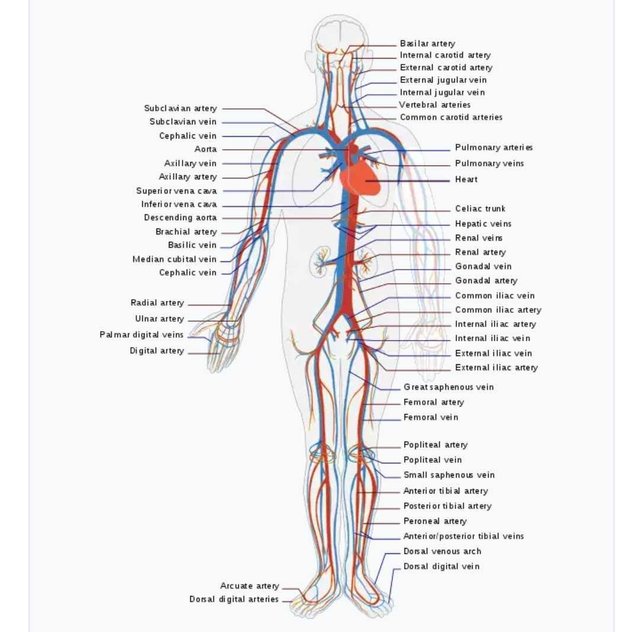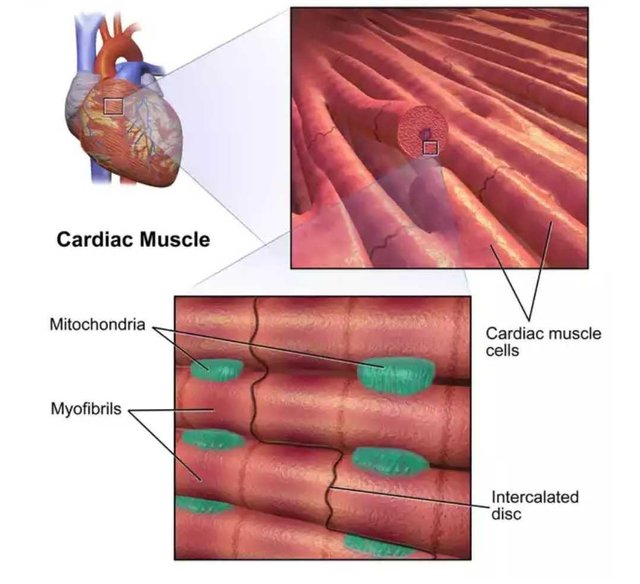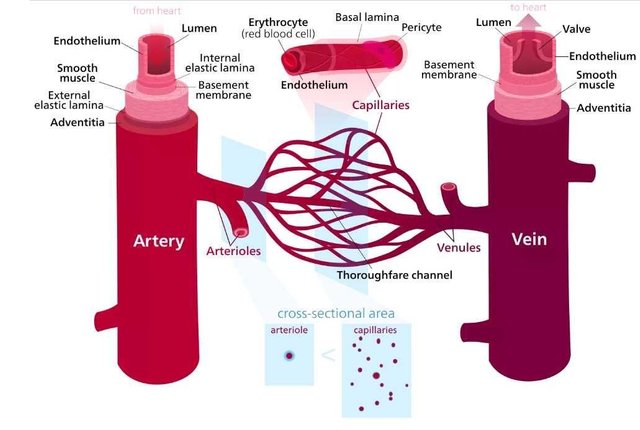HYPERTENSIVE HEART DISEASE (HHD) : Why the surge?

The heart . Source:Wikimedia - CC BY-SA 3.0.
Nearly one out of every two adult American citizens are living with a cardiovascular disease of which hypertension is well pronounced this makes up about half the adult population with the exact statistics from the American Heart Association (AHA) being 48.1% of the adult population and Africa having the highest case of high blood pressure, making it a condition of global importance as the economic aspect of managing this condition is a huge blow on individual and national economy with an estimated loss of $351.2 billion in both management of the condition and the mortality from the condition between 2014 and 2015 and economic loses from heart diseases predicted to rise to $749 billion in 2035.
However, during my last visit to the hospital, I over heard the doctor advising his client on his heart health:
Currently the values are normal, however, over the days there seems to be an increase in your systolic and diastolic blood pressure when compared to the values we got the last time you came for your check-up, you should try and exercise more and also reduce your consumption of bad cholesterol, your body weight is also increasing from the last time we check them.
The rate and intensity of heart health awareness campaigns have also increased over the years with many governmental and non-governmental organizations coming out to push heart health advise to the general public, but on the contrary, these efforts seems to be ‘counter productive’ when compared to the chronology of heart disease prevalence, one would curiously wonder; are these sermons hitting the wrong ears?, or are we actually experiencing an attenuated statistics compared to what we would have had in the absence of these campaigns?, or are heart diseases bound to rise regardless of how much we try?. Probably you’ve got more questions on your mind; but whichever way it goes, the surge in case of heart disease is alarming and surprising
The System

The circulatory system . Source:Wikimedia - CC BY-SA 3.0.
Not to dive much into cardiology and hematology, but if life must be sustained, the optimal functioning of these systems is indispensable, while the bone marrow produces blood cells to run with the protein-packed plasma on the blood vessels, the heart ensures that this flood of cells, fluids, compounds, elements and ions gets to every part of the body to ensure that every organ, tissue and villagers adequate resources to run their task of cell sustenance and continuance of life. The heart beats continuously, pumping blood to the body in systemic circulation and also transporting them from systemic circulation to the lungs for oxygenation and purification. This cycle continues throughout life and actually the end of life is an irreversible halt in this cycle, while many organs could halt for a while and possibly stop functioning completely and life continues without them, a shift in the normal functioning of the heart and the circulatory system affects the whole organs as they are dependent on the adequate supply of blood from the circulatory system while this in turn is on the ability of the hear to pump the blood with enough pressure to reach these locations.

The cardiac muscle. Source:Wikimedia - CC BY-SA 3.0.
The heart itself is a carefully constructed ball of cardiac muscles getting supplies from the coronary vessels and hence also suffers from the pathologies of the general circulation, the heart in turn reacts to changes in the signals from the circulatory system, principally by varying its speed of pumping blood to the body and also to the lungs. The speed with which the heart pumps blood is the main factor influencing blood pressure.
The blood pressure also indicates the rate at which the heart works, this is courtesy of the contractions and relaxation of the cardiac muscles in response to the existing biological or pathological conditions.
The normal blood pressure is 120mmHg systolic and 80mmHg diastolic pressures, reasonable shifts from these values are dysfunctional with effects ranging from mild to severe and lethal at the extreme. A reasonable reduction in the blood pressure results in hypotension while a persistent increase in the blood pressure is a major indication of hypertension which is currently gaining grounds as regards the number of people living with it.
The table below shows the classification of hypertension and their corresponding systolic and diastolic pressures:

Classification of hypertension and their corresponding systolic and diastolic pressures. Source:Wikimedia - CC BY-SA 3.0.
During these conditions, the load on the heart is increased and hence it work rate too, the cardiac muscles and the other tissues of the heart are forced to work above the normal rating a bid to meet up with the requirements of the body, leading to hypertrophy of the heart tissues, this results in different but inter–operative pathologies affecting the different chambers and functions of the heart as seen in:
Systemic hypertensive disease
The left side of the heart is tasked with the pumping of blood to the general system, via the aorta, oxygenated blood is pumped into general circulation through the left side of the heart, in hypertensive conditions, the need to pump blood to the general circulation is increased and so also is the work load on the heart, this induces an overload in the left ventricular pressure and a resultant hypertrophy of the myocardium, the left ventricular walls are thickened and in the stiff state, the dilatation of the cardiac muscles is impaired, the weight of the left side of the heart is also increased with the weight exceeding 500 grams,, this leads to congestive heart failure, arterial fibrillation due to enlargement of the left artery as a result of the stiffness of the left ventricular walls.
Pulmonary hypertensive heart disease
The right hand side of the heart’s task of oxygenation of blood is also affected in some hypertensive heart disease due to some disorders of the lungs or the pulmonary vessels causes an increased work load on the heart to ensure that the blood coming from circulation is well oxygenated for continued circulation, this increased work load leads to hypertrophy, dilatation and possible failure of the right ventricle.
Mechanism of hypertensive heart disease
With these dysfunctions in the right side, left side or both sides of the heart, general circulation is affected due to a glitch in the function of the heart, however, these two processes are interrelated as cardiovascular irregularities are the principal cause of hypertensive heart disease. This overload maybe due to:

blood vessels circulates blood throughout the body . Source:Wikimedia - CC BY-SA 3.0.
Compression of the blood vessels: The blood vessels are made of tissues and muscles arranged into layers, the intima is the most internal layer of the blood vessels while the externa is the external layer of the blood vessels, between this two layers is the media with variable components which enables the vessel perform its functions, the media contains smooth muscles which contracts and relaxes in congruence with the blood pressure. The eternal layer of the vessels is composed of collagen and is in contact with adipocytes stored under the skin, high elevation of the amount of these adipocytes as seen in obesity may lead to the compression on the external layer by the adipocytes, this compression results in the contraction of the smooth muscles of the media hence narrowing the blood vessels and hence the need for a higher pressure pump to enable the blood pass through the narrowed vessels.
Congestion of the blood vessels: Products of abnormal internal blood clotting such as a thrombus or an embolus may clog the blood vessels and slow the passage of the blood through the blood vessels, moving these disseminated intravascular coagulation together with blood will require an increased force—pressure. Hence the heart is stimulated to produce more pressure through increased work rate.
Defective lungs: This is one of the major risk factors of pulmonary hypertensive heart disease, a malfunctioning lungs causes an impaired oxygenation of the blood, hence the need for an increased transport of the blood to the lungs for oxygenation and eventually the need for the heart to work more towards achieving the goal of oxygenation, this overload and increased work rate leads to hypertrophy of the heart tissues, a major cause of cor pulmonale(Pulmonary Hypertensive Heart disease)
These defects in the components of the circulatory system tells on the heart, with the requirements making the heart work more, blodd flow to the heart in some of these cases may also be reduced, insufficient blood supply to the heart is a major cause of myocardial infarction.
Why the surge?
Unarguably till this stage, you’ve still got this question running through your minds, actually, it’s same here, with much already said about this condition, why they keep growing in terms of the number of people suffering from them is puzzling, however, with the current global lifestyle, one would suggest many factors which could lead to this condition, several risk factors have been named by the American Heart Association, the rise in some of these practices which are said to predispose someone to heart disease accounts highly for this overwhelming prevalence, however many cases are above lifestyle issues and only secondary hypertensive heart disease are diagnosed to be caused by these factors, not absolutely any ways, these risk factors and how they influence the development of hypertensive heart disease are as follows.
Genetic inheritance: About 95% of the confirmed cases of hypertensive heart disease can be traced to the genetic make up of the individual, genetic hypertensive heart disease also known as being hypertensive heart disease is the most prevalent case, however such cases presents with mild pathologies which the individual can live with for a lifetime when managed adequately, however engagement of such persons in activities which predisposes them to secondary hypertensive heart disease results in a more intense and lethal cases.

smoking have been identified as one of the top three risk factors of cardiovascular disease . Source:Wikimedia - CC BY-SA 3.0.
Lifestyle: The lifestyle of individuals in the current modernized world holds the major risk factor of hypertensive heart disease and accounts for a major percentage of the secondary hypertensive heart diseases, this includes habits such as smoking , nutrition and occupation. Smoking have been singles out as a major risk factor for heart diseases by the American Heart Association.
Worldwide, tobacco smoking (including second-hand smoke) was 1 of the top 3 leading risk factors for disease and contributed to an estimated 7.2 million deaths in 2015. In 2016, smoking ranked fourth in causing disability-adjusted life years (DALYs). In the US, tobacco use was the second leading risk factor for death and the leading cause of DALYs.
American Heart Association 2019
The act of tobacco smoking have grown over the years, and also is the number of confirmed cases of hypertensive heart disease, this is dire to the detrimental effect of tobacco to the lungs and its ability to caused intravascular coagulation.
Nutritional habits such as high consumption of low density lipoproteins also known as bad cholesterol also increases the risk of going down with hypertension, hypertensive heart disease or any other cardiovascular disease. White collar jobs which involves sitting down for most hours of the active periods is also one of the risk factors, as inactivity have also shown to increase the chances of coming down with secondary hypertension.
Secondary sources: Patients of diabetes tends to have two time the probability of a normal person to suffer hypertensive heart disease, this is due to the debilitating effects of diabetes on the blood vessels as diabetes decreases the ability of the blood vessels to stretch and also increases the amount of fluid in the body, this triggers the heart to pump faster and increase the pressure of blood flow respectively, high cholesterol utilization in diabetic patients is also one of the reasons for this.
In conclusion…
While the surge continues, the world have invested much in finding a means of survival and also propelling the awareness campaigns to reach target individuals and expose them to the knowledge of the risk factors and management of already existing cases. However some of these factors are hard to control, due to individual reluctance and indifference, while genetic cases are the predominant cause and seems to be out of our control, the fact that engaging in any of these risk factors increases one’s chances of coming down with this condition still stands, an individual whose genes for hypertension is altered could still live throughout their lifetime without suffering from any hearth disease if they adhere to the preventive measures which is simply staying away from the risk factors and taking precautionary measures.
Sad enough secondary hypertension is on the increase and individuals whose genes for hypertension are normal are suffering from this condition due to their lifestyle which predisposes them to the condition, while we sound the warning, only the willing ears hears and adheres…
References
Hypertensive heart disease ~Wikipedia
Heart disease and stroke statistics-2019-at a glance~AHA
How are diabetes and hypertension linked~medical news today
If you write STEM (Science, Technology, Engineering, and Mathematics) related posts, consider joining #steemSTEM on steemit chat or discord here. If you are from Nigeria, you may want to include the #stemng tag in your post. You can visit this blog by @stemng for more details. You can also check this blog post by @steemstem here and this guidelines here for help on how to be a member of @steemstem. Please also check this blog post from @steemstem on proper use of images devoid of copyright issues here.

This post has been voted on by the SteemSTEM curation team and voting trail in collaboration with @curie.
If you appreciate the work we are doing then consider voting both projects for witness by selecting stem.witness and curie!
For additional information please join us on the SteemSTEM discord and to get to know the rest of the community!
Hello! I find your post valuable for the wafrica community! Thanks for the great post! We encourage and support quality contents and projects from the West African region.
Do you have a suggestion, concern or want to appear as a guest author on WAfrica, join our discord server and discuss with a member of our curation team.
Don't forget to join us every Sunday by 20:30GMT for our Sunday WAFRO party on our discord channel. Thank you.
Thanks for using eSteem!
Your post has been voted as a part of eSteem encouragement program. Keep up the good work! Install Android, iOS Mobile app or Windows, Mac, Linux Surfer app, if you haven't already!
Learn more: https://esteem.app
Join our discord: https://discord.gg/8eHupPq